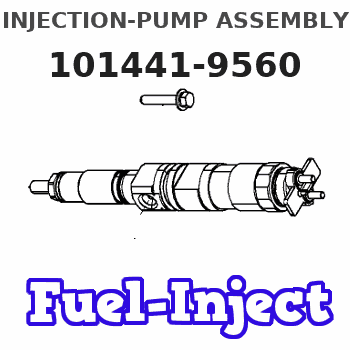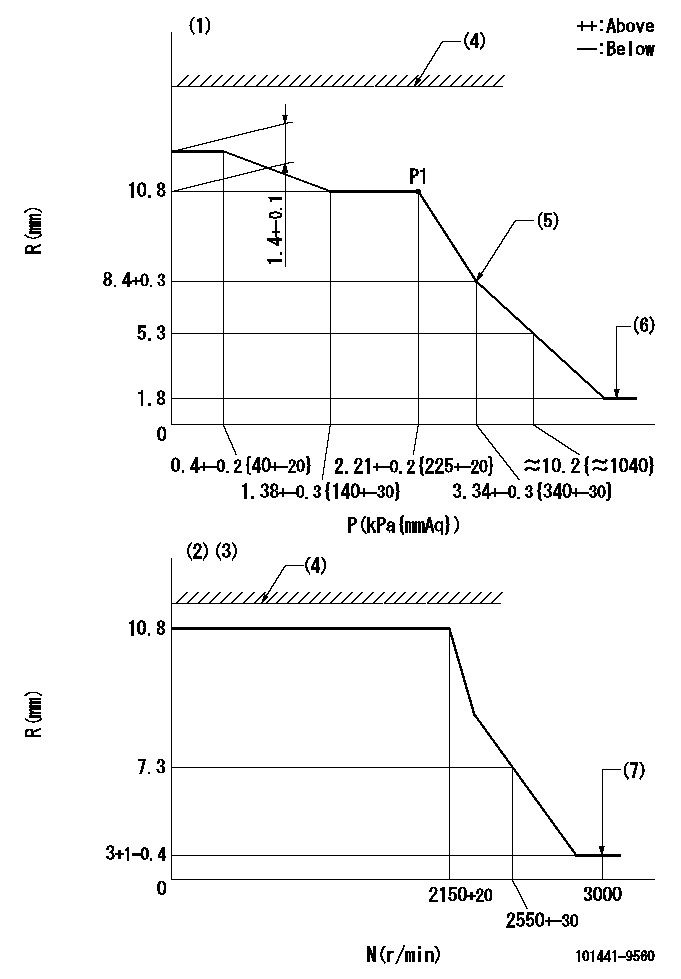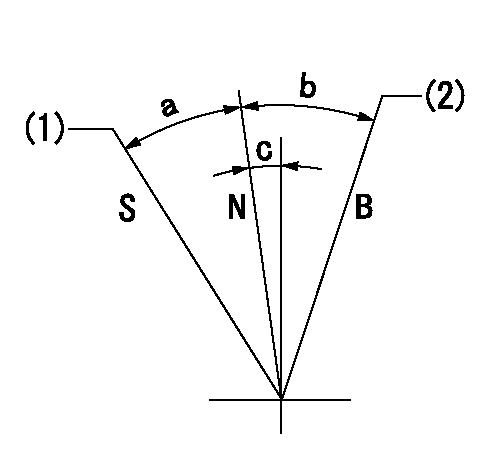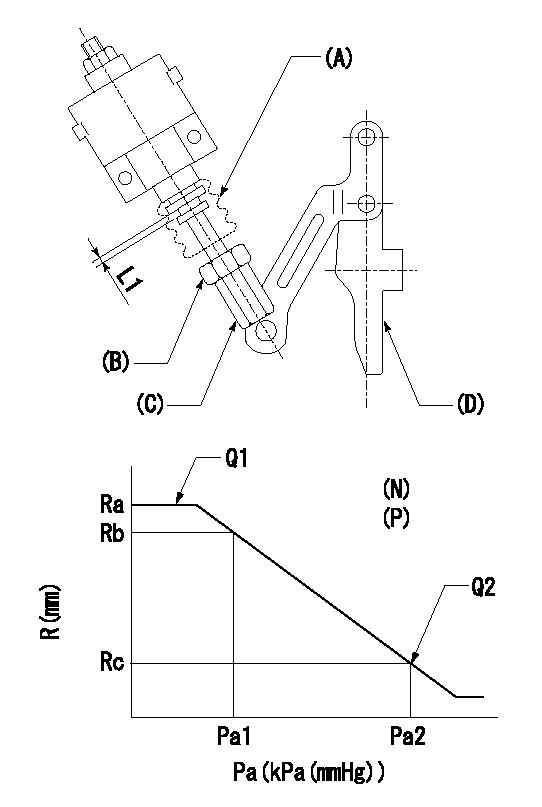Information injection-pump assembly
ZEXEL
101441-9560
1014419560

Rating:
Cross reference number
ZEXEL
101441-9560
1014419560
Zexel num
Bosch num
Firm num
Name
Calibration Data:
Adjustment conditions
Test oil
1404 Test oil ISO4113 or {SAEJ967d}
1404 Test oil ISO4113 or {SAEJ967d}
Test oil temperature
degC
40
40
45
Nozzle and nozzle holder
105780-8140
Bosch type code
EF8511/9A
Nozzle
105780-0000
Bosch type code
DN12SD12T
Nozzle holder
105780-2080
Bosch type code
EF8511/9
Opening pressure
MPa
17.2
Opening pressure
kgf/cm2
175
Injection pipe
Outer diameter - inner diameter - length (mm) mm 6-2-600
Outer diameter - inner diameter - length (mm) mm 6-2-600
Tester oil delivery pressure
kPa
157
157
157
Tester oil delivery pressure
kgf/cm2
1.6
1.6
1.6
Direction of rotation (viewed from drive side)
Right R
Right R
Injection timing adjustment
Direction of rotation (viewed from drive side)
Right R
Right R
Injection order
1-3-4-2
Pre-stroke
mm
2.15
2.1
2.2
Beginning of injection position
Drive side NO.1
Drive side NO.1
Difference between angles 1
Cal 1-3 deg. 90 89.5 90.5
Cal 1-3 deg. 90 89.5 90.5
Difference between angles 2
Cal 1-4 deg. 180 179.5 180.5
Cal 1-4 deg. 180 179.5 180.5
Difference between angles 3
Cyl.1-2 deg. 270 269.5 270.5
Cyl.1-2 deg. 270 269.5 270.5
Injection quantity adjustment
Adjusting point
-
Rack position
12.2
Pump speed
r/min
1100
1100
1100
Average injection quantity
mm3/st.
48.5
47.5
49.5
Max. variation between cylinders
%
0
-2.5
2.5
Basic
*
Fixing the rack
*
Injection quantity adjustment_02
Adjusting point
-
Rack position
10.8
Pump speed
r/min
2150
2150
2150
Average injection quantity
mm3/st.
47.3
45.3
49.3
Fixing the rack
*
Injection quantity adjustment_03
Adjusting point
-
Rack position
8.6+-0.5
Pump speed
r/min
350
350
350
Average injection quantity
mm3/st.
8
6.9
9.1
Max. variation between cylinders
%
0
-15
15
Fixing the rack
*
Timer adjustment
Pump speed
r/min
550--
Advance angle
deg.
0
0
0
Remarks
Start
Start
Timer adjustment_02
Pump speed
r/min
500
Advance angle
deg.
0.5
Timer adjustment_03
Pump speed
r/min
2150
Advance angle
deg.
6
5.5
6.5
Remarks
Finish
Finish
Test data Ex:
Governor adjustment

N:Pump speed
R:Rack position (mm)
P:Negative pressure
(1)Pneumatic governor
(2)Mechanical governor
(3)Acting negative pressure: P1
(4)RACK LIMIT: RAL
(5)Beginning of idle sub spring operation: L1
(6)With stopper disk.
(7)Injection quantity Q = Q1 or less
----------
RAL=14+-0.1mm L1=8.4+0.3mm Q1=3mm3/st
----------
----------
RAL=14+-0.1mm L1=8.4+0.3mm Q1=3mm3/st
----------
0000001101

N:Normal
B:When boosted
S:Stop
(1)Rack position = aa
(2)Rack position corresponding to bb
----------
aa=(1.8)mm bb=14mm
----------
a=21deg+-3deg b=3.5deg+-5deg c=1deg+-5deg
----------
aa=(1.8)mm bb=14mm
----------
a=21deg+-3deg b=3.5deg+-5deg c=1deg+-5deg
0000001501 ACS

(N): Speed of the pump
(P): governor's negative pressure
(Pa): aneroid compensator's negative pressure
(A) rubber boot
(B) Nut
(c) Nut
(D) Lever
1. Aneroid compensator installation
(1)Turn nut (C) to adjust gap to L1. (Remove rubber boot at adjustment.)
(2)Lock using nut (B).
(3)After installation, the lever D must move smoothly when the lever D is moved to the excess fuel side, and R = R1 or more.
----------
L1=0.1~0.5mm
----------
N=1100r/min P=0.2kPa(20mmAq) Ra=12.2mm Rb=12.15mm Rc=R2(11.4)mm Pa1=8-5.3kPa(60-40mmHg) Pa2=21.9kPa(164mmHg) Q1=48.5+-1cm3/1000st Q2=41.2+-1cm3/1000st
----------
L1=0.1~0.5mm
----------
N=1100r/min P=0.2kPa(20mmAq) Ra=12.2mm Rb=12.15mm Rc=R2(11.4)mm Pa1=8-5.3kPa(60-40mmHg) Pa2=21.9kPa(164mmHg) Q1=48.5+-1cm3/1000st Q2=41.2+-1cm3/1000st
Timing setting

(1)Pump vertical direction
(2)Position of gear mark 'ZZ' at No 1 cylinder's beginning of injection
(3)B.T.D.C.: aa
(4)-
----------
aa=16deg
----------
a=(110deg)
----------
aa=16deg
----------
a=(110deg)
Information:
Illustration 1 g00565249The test for the water temperature contactor switch is a test for the temperature on the switch actuator and an electrical continuity test. This test will determine if the water temperature contactor switch is faulty and if the switch should be replaced. Use the 4C-6500 Digital Thermometer and the 4C-6500 Digital Thermometer for this test.
Install a probe from the 4C-6500 Digital Thermometer in the water manifold as close as possible to the water temperature contactor switch. Disconnect the connector for the water temperature contactor switch from the junction box. Note: Do not remove the water temperature contactor switch from the engine in order to conduct this test. The water temperature contactor switch uses the coolant flow and the coolant temperature in order to activate the switch at the actuation temperature.
When the water temperature contactor switch is disconnected from the junction box and the engine is stopped, check the continuity across the contact (WTS-3) and the common contact (WTS-2). Continuity should exist. This indicates that the circuit is closed across the contacts. Check the continuity across contact (WTS-1) and the common contact (WTS-2). Continuity should not exist. This indicates that the circuit is open across the contacts. If these conditions do not exist, the water temperature contactor switch is faulty and the switch needs to be replaced.
Start the engine. While the engine is running, place a load on the engine. Restrict the air flow to the engine. The engine should continue to run and the coolant temperature should increase to the actuation temperature of the water temperature contactor switch.
Observe the coolant temperature gauge in order to determine the temperature of the coolant when the actuation of the switch occurs. Compare the temperature on the gauge with the specifications for the water temperature contactor switch. The switch is actuated when the circuit across contacts (WTS-1) and (WTS-2) closes. The engine should shut down when the switch is actuated. This activates the protection system.
The actuation of the water temperature contactor switch may not occur when the temperature of the coolant is greater than the maximum value for the actuation temperature of the switch. Immediately reduce the load that is on the engine and remove the restriction to the air inlet. Allow the engine to run at idle until the temperature of the coolant returns to normal before you stop the engine.
The actual temperature of the coolant may not have been within the specifications of the water temperature contactor switch at the time of actuation. The switch is faulty and the switch needs to be replaced. Actuation might not occur when the temperature of the coolant is at the maximum. The switch is faulty and the switch needs to be replaced.